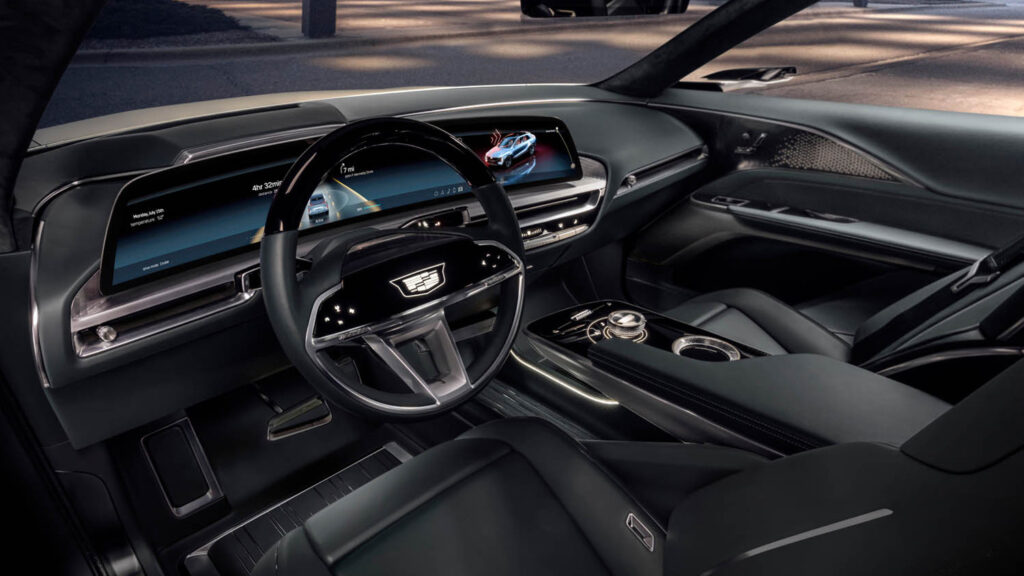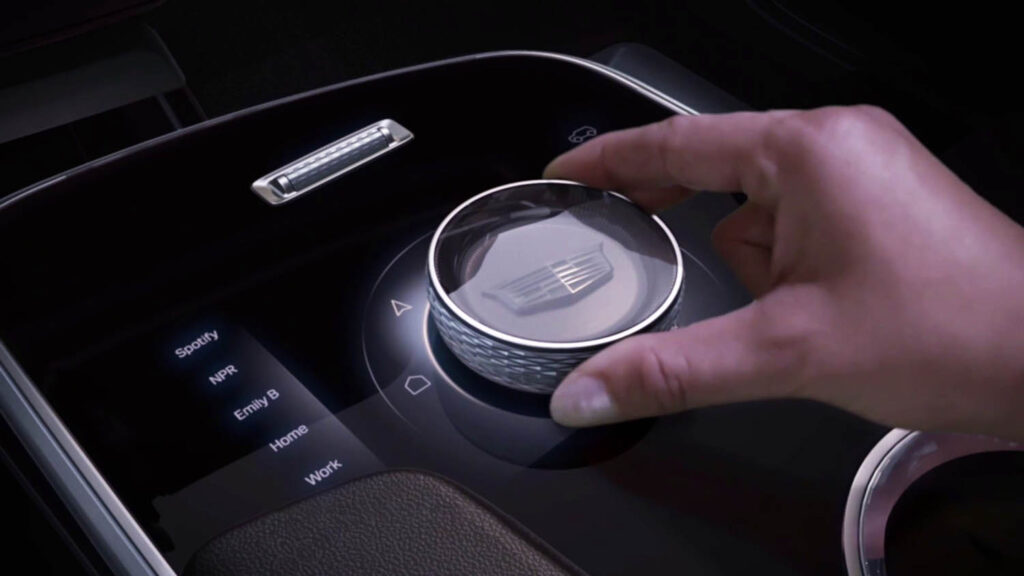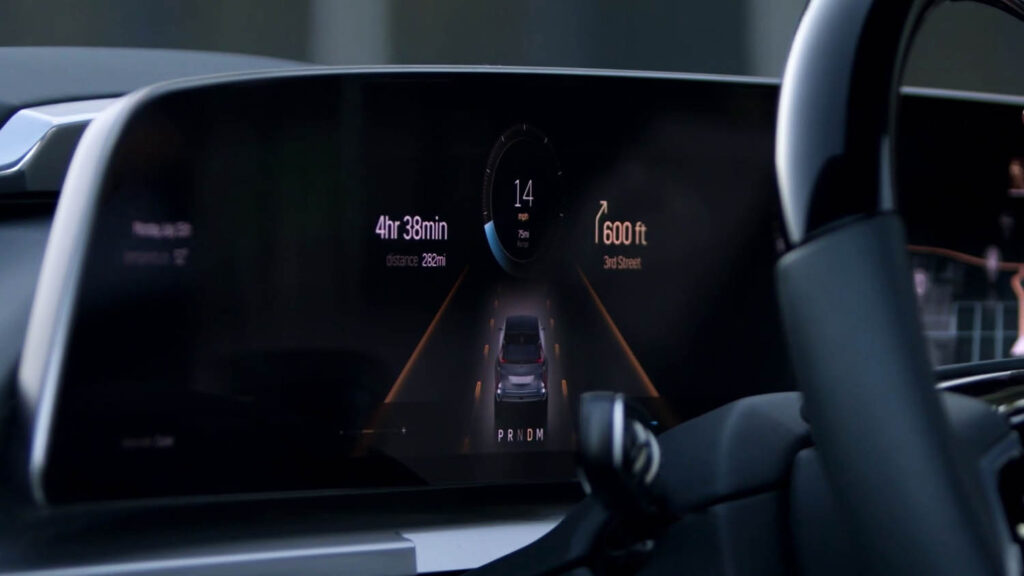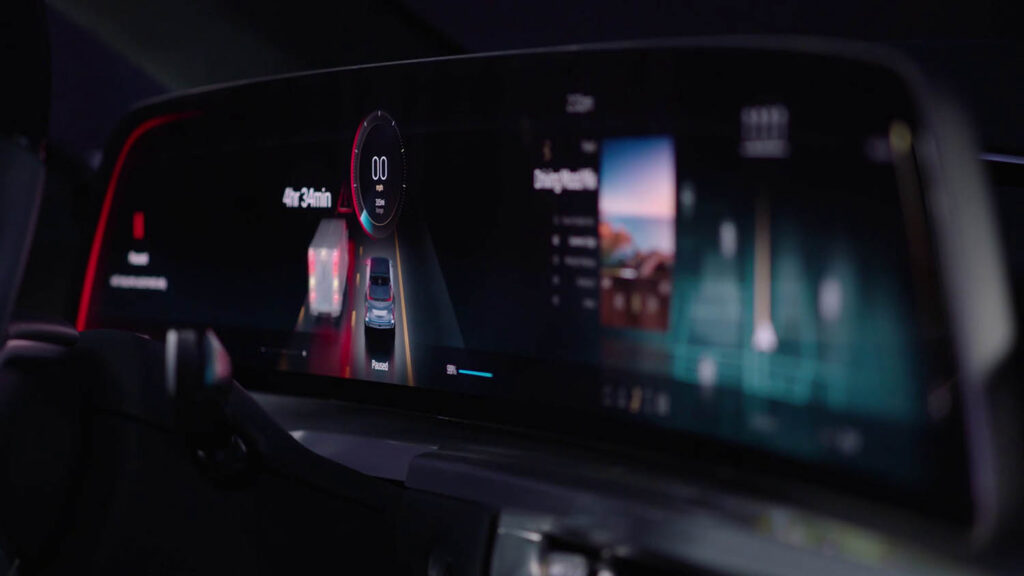Territory Studios is the company behind modern interface visualisations in General Motors’ new Cadillac Lyriq, an all-electric vehicle rooted in more than a century of automobile innovation
Having confirmed it will end the current decade as a brand completely based on electric vehicles (EVs), Cadillac has unveiled its new Lyriq model, the first of a new generation of battery-powered luxury vehicles.
With the development of the Lyriq came a unique opportunity to set a precedent for in-car EV design, from both a user interface (UI) and user experience (UX) perspective. This recognises that drivers need to feel safe and comfortable in such an advanced vehicle and capable of controlling in-car tasks with ease and efficiency.
Driver communication is no longer limited to analogue controls. Vehicles are no longer simply vessels, transporting occupants from Point A to Point B. Executives at Cadillac say that car travel in this new breed of motors should be an experience in itself, so innovations in in-car technology are hugely important, making the company not just a producer of cars, but also a technology provider. These innovations include the Lyriq’s new 33-inch advanced LED dashboard.
Big screen
To fully explore the potential of the new interior focus, the Cadillac UI design team collaborated with digital visual effects experts at Territory Studio, which has bases in London, New York and San Francisco, to create a new, future-facing in-car experience for the iconic brand.
As well as fitting with the aesthetics of the car, the design of the in-car human-machine interface (HMI) needed to safely connect drivers to advanced automotive technologies through intuitive design. Emphasis was placed on the ability of UI and UX to control in-car tasks as a matter of safety and convenience. Beyond that, the system had to be intuitive, unintimidating, and efficient to use, with unencumbered touch activation and responsive surfaces. The design also needed to engage Cadillac consumers by highlighting how comfort and safety have evolved in a fully electric luxury vehicle offering advanced automotive technologies.
The Lyriq main console is an advanced LED screen capable of presenting over one billion colours. This screen serves as both instrument panel and infotainment system; an in-vehicle digital cockpit managing realtime information, notifying drivers of distraction by continuously monitoring and interacting with external objects during travel.
Effectively, Territory Design had a blank canvas on which to construct a new driving experience. The company used Maxon’s Cinema 4D package to full effect, in order to model and render content from concept stage through production-ready assets.
The design process was complex, taking 10 months to build the appropriate and functional UI needed to work with the driver to eliminate forgetfulness and oversight on the roads, all while operating with no distractions.
In practice, Cadillac executives say that the interface improves reaction time and enhances driving proficiency. The UI is detecting and evaluating information in realtime from a slew of sensors around the car (LiDAR, radar and cameras, for example) so the driver can understand and process all this information as seen through the car’s UI.
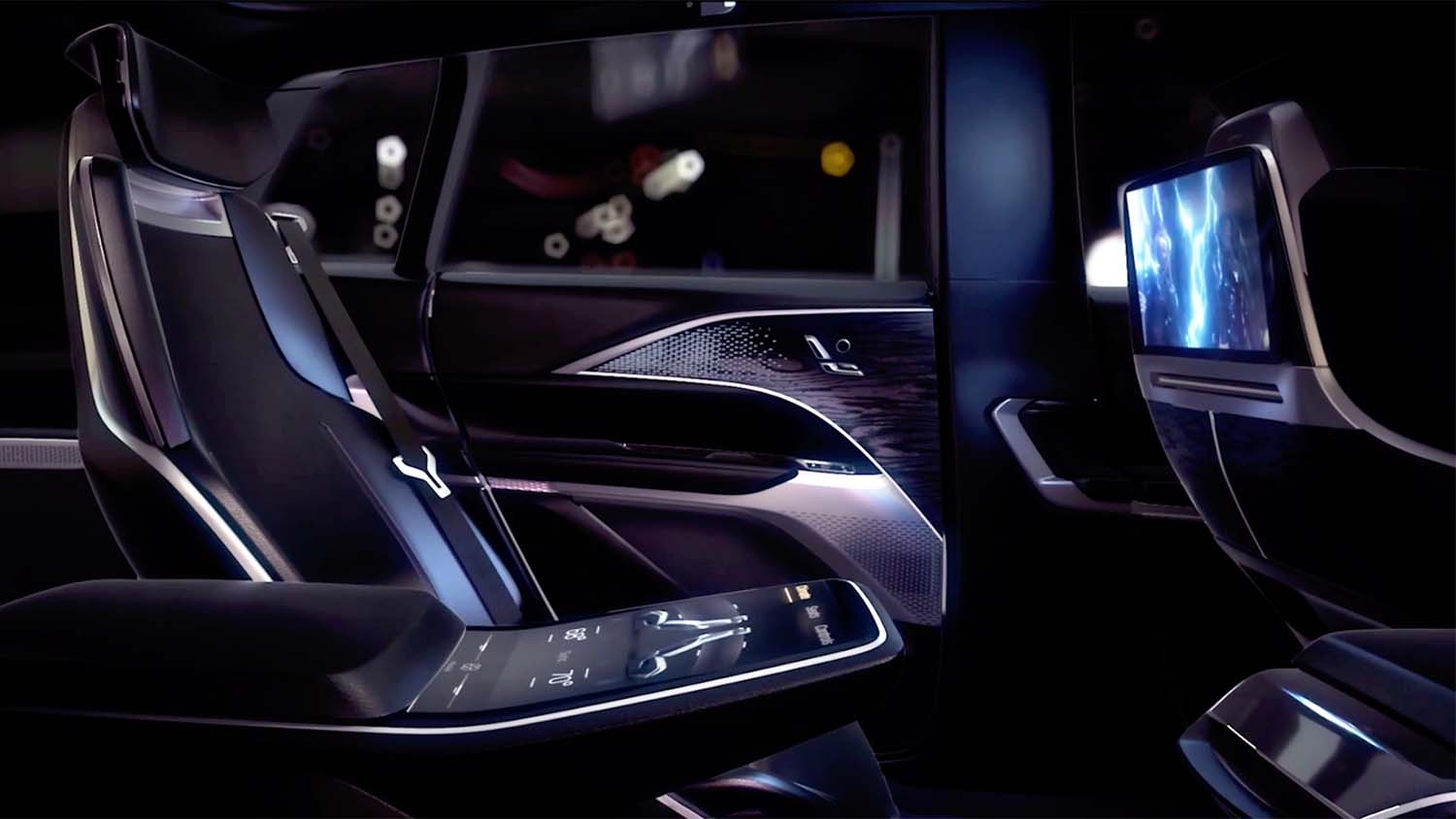
Movie-star looks
For a show stopping luxury vehicle like the Lyriq, the aesthetics needed to embody quality and lavishness.
Territory Design took some design cues from Cadillac’s heritage, but pared back the display with a refined minimalist 3D UI to help blend with the elegant interior and its choreographed lighting.
With extensive experience using Cinema 4D to create fictional user interfaces for films, including Ex Machina, Ready Player One, and The Avengers, Territory Studio was able to delve deeply into different style elements and design choices for the Lyriq.
From a glorious light show that pairs with other interior features and lighting when starting up the vehicle, to clear and precise text and numbering to feed back important information when driving, the design evolves through use, while maintaining a strong visual identity that marries with the physical form of the car.
Cinema 4D’s modelling capabilities, animation and rendering tools allowed the creation of the perfectly tailored UI, capable of operating seamlessly with all the vehicle’s media and entertainment, navigation, parking assistance, driver assistance systems, climate and seat control, speed, fuel level, trip, temperature and more.
With EVs representing the next frontier for the automobile industry, the shift is forcing legacy automakers to reimagine the entire driving experience, with marques like Cadillac looking to set a new vision for how UI sits in automotive design.

